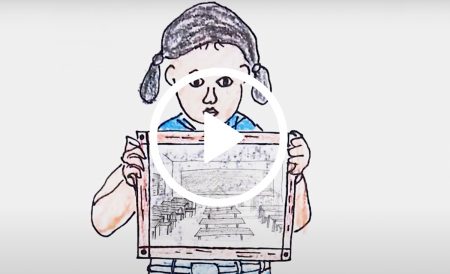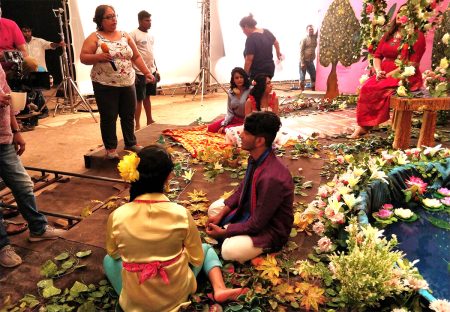What does a farmer look like? Whatever the image that sprang to your mind just now it’s likely to have been the image of a man. Even the media coverage of the 2020 farmer protests against the new farm laws — the biggest farmer protests the country has known — rarely features any women. Do women work in agriculture? We know they do. But somehow we classify those images of women working in the fields differently, as if they are just ‘helping’.
So that is a stereotype all right but is there real harm in this stereotype? Are there any significant consequences to us thinking that Indian farmers are men?
“First, you understand this: in this society, there is no such thing as a woman farmer. She doesn’t exist. In a progressive sort of way opinion pieces and boutique policy documents say ‘women farmers’ but the generic, everyday, rough-and-ready word - ‘farmer’ - is a man. The inheritance of a farmer is the inheritance of a man, the constitutional endowments of a farmer are those of a man, the state benefits and loans and easy lines of credit for farmers are for men, seeds and fertiliser rations are for men, and men buy and sell land. The woman won’t get a loan.
The numbers
To begin with, that’s a whole lot of women to leave out and a whole lot of work to leave out. According to the National Council of Applied Economic Research (NCAER, 2018) and the University of Maryland, women form over 42 per cent of the agricultural labour force in India. And studies show that with men in rural India shifting to non-farm occupations and migrating to cities, more women are moving to agricultural work, not less.
What if you reverse the question? 73.2% of rural women workers in India are engaged in agriculture, according to the Periodic Labour Force Survey 2017-18 (PLFS). Which means any image anyone may still have of women ‘not working’ is completely false.

To look at women farmers as working women is to examine afresh what we think of as a workplace. To not recognise women agricultural labourers as workers is to leave out lakhs of human beings from entitlements such as pensions and institutional credit.India’s anti-sexual harassment at the work place laws sprung from tragic circumstances. In a rural context however, when sexual harassment is discussed, urban white-collar jobs dominate discussions. As Khabar Lahariya reports, at “the local gallamandis too, women farmers face serious discrimination, and are offered raw deals, often laced with sexual harassment – to which no legal recourse is ever sought or granted.” These mandis where women spend days and weeks do not have toilets, leading to predictable health concerns.
The recognition of the lakhs of women engaged in agriculture (alongside domestic work and care) should make us think of the particular vulnerability of women farmers.
The recognition of women in farming should inflect agricultural policy created by the state to remove gender-specific barriers in farming. What are these barriers? Most of them go back to one fundamental difference between men and women in farming.
Women farmers have no land
In her groundbreaking 1994 book, A Field of One's Own, feminist economist Bina Agarwal famously wrote, “The single most important factor affecting women's situation is the gender gap in command over property.”
Little has changed since. When Agarwal discussed that famous quote in a 2016 interview she said, “While working on women farmers it became clear to me that their disadvantaged position was closely linked to their lack of command over productive assets, especially land, in their own right. This also reduced their access to credit, inputs and technology. In fact, anyone working on rural India knows that land ownership can determine whether a family is poor or prosperous — the social respect it commands, and the political clout it has. And women of landed households are assumed to be well-off even if they have no property of their own.”
As Agarwal said, “In reality, there are huge gender inequalities within households in the distribution of resources and tasks, in education and health care, and even in the survival of girl children. In homes owning tractors, I found women cooking with primitive and smoky stoves with serious health consequences. Women without independent assets have limited bargaining power within families and communities.”

What about political rights?
Recognising that women farmers are invisible means understanding that ‘farmers’ at large are representationally disadvantaged. This means that if official statistics say the lack of infrastructure for irrigation in Odisha is affecting 10,000 farmers, they are likely to be not counting the women farmers affected at all. The non-inclusion of women in the political category farmer means abysmal actual representation. According to the ‘Status Of Women Farmers In Uttar Pradesh’ survey of 2016 by the Gorakhpur Environmental Action Group and NGO Oxfam, only 2.3% of women farmers are on any government committees, schemes or programmes. Even in death, women in agriculture are overlooked. The suicides of women farmers or farm widows are not counted by the National Crime Records Bureau and are not included as farmer suicides, a category that usually comes in for significant political scrutiny. National Crime Records Bureau (NCRB 1995-2016) data reports 3,32,798 farm suicides, of which 19,968 are female farmer suicides (94% men). [Some] 3,12,830 women in these households have been suddenly left to manage the home and the land. Invisibilisation of women farmers means that the high number of suicides that are recorded as ‘suicides of housewives’ go unrecorded as female farm suicides.*
Land ownership, violence and power
“We used to meet every evening and talk about things,” KanchanBala says. “And [a woman] would say the head of her household, or the head of the panchayat, … beat her because there was too much salt in his food. He beat her badly, and she’s scared – what will he do once he’s a landowner too? And then, the work he does, she does too. So why should it be that the [land] deed is in his name? It should be in the name of the woman as well as the man. And as a consequence when homes were constructed for the homeless, in Bihar and elsewhere – under Indira Awaas Yojna and such – those deeds were made out jointly too. Joint ownership by husbands and wives.” As Bina Agarwal’s study, (undertaken with a colleague, Pradeep Panda) in Kerala shows the impact of women owning immovable property (a house or land) on spousal violence is startling. Agarwal says,
“Among ever-married women in the 15-49 age group, the incidence of physical violence was 49% if they owned neither land or a house, but only 7% if they owned both, and 18% and 10% respectively if they owned either land or a house.”
Ownership of land and being identified as farmers in their own right, being able to ‘command’ land as Agarwal calls it, leads to massive changes in decision-making. As Badki, a farmer from Bodh Gaya said in an interview with Manushi, “My husband wanted to get the loan money in his hands so that he could waste it. I didn’t give him the money, I bought a bullock. This is what has happened in the whole village. None of the men got any money, each family got a bullock. That’s the only difficulty they are facing. If the land is in women’s names, the loan money cannot be spent on drink or frittered away.”

Entitlements from the state
Since women are considered neither ‘farmers’ nor ‘land owners’ the rights and state entitlements designed to facilitate agricultural production (loans, subsidies, provision of seeds or fertiliser and so on) do not apply to women. This means that the livelihoods of women farmers are even more precarious than those of their male counterparts.
As for the 2020 protests, how do they affect women farmers and women farm workers? ShreyaSinha, post-doctoral researcher at the University of Cambridge, points to two big potential blows. “One, in many parts of the country due to the feminisation of agriculture (following the migration of men) women are the ones doing the farming.
If contract farming comes into place, women with their names not on the deeds and not on loans (except meagre micro credit loans) will be left out. Two, the discourse around the new laws says that now farmers can go anywhere and sell their produce. Women farmers with their limited mobility cannot go just anywhere.
How can we change the land-ownership patterns?
According to the India Human Development Survey (IHDS, 2018), less than two per cent of agricultural land is inherited by women members of the family. So does the solution lie in changing inheritance laws? As of August 2020 the Supreme Court held that daughters, like sons, have an equal right to inherit ancestral property, clearing up any vagueness from earlier amendments to the Hindu Succession Act.
While gender-just inheritance laws are important, they aren’t enough. According to Indiaspend, “No more than 4.9% of farmers control 32% of India’s farmland. A ‘large’ farmer in India has 45 times more land than the ‘marginal’ farmer. [Some] 101.4 million – or 56.4% – of rural households own no agricultural land.”
As Keerti, an activist with Makaam says, land rights of women cannot be seen in isolation from the land rights of Dalits or indigenous communities, or rights over productive resources as a whole – over forests or rivers, for instance. She observes, “Women’s land rights question is very closely linked to land reform and redistribution – it cannot come solely through any amendment to any Right to Property Act. [About] 33 lakh households are landless. Tribal landowners own small tracts of land. What about them?”
“We have to work in a policy environment where government either gives women land through land reforms, or else purchases land and redistributes it to women and other landless people. And this is not a new idea, or an off-hand idea. It’s been under discussion for three decades - it was recommended by the Bandyopadhyay Commission in Bihar in 2008,” says Keerti.
KanchanBala says, “In Bodh Gaya none of the officials – government, administrative, legal – were prepared to sign on women getting their hands on land. We said, where is it written that women cannot own land? And they said, maalik to mard hota hai. We said, no. Labouring women as well as the men are entitled to this land. That was all. So [for] the first redistribution of math land – the deeds were made out to women.”
How are women farmers fighting for their rights?
Thousands of women farmers’ collectives, self-help groups, women’s organisations, as well as generic civil society organisations, individual activists and researchers, have been talking about women farmers and the plethora of injustices meted out to them, institutionally and personally, for decades. There are almost as many strategies for empowering women farmers as there are women farmers. Take MAKAAM, a pan-India forum that works to bolster the collective demands of women farmers across the country. Keerti says, “Because demands are dependent on on-ground realities, [they are each] different in Jharkhand, in Odisha, in a village in Gujarat… In Bihar, inheritance and land rights have largely been the focus. For some collectives, getting women farmers Kisan ID cards is the key. For others, ID cards are irrelevant: they want the focus to remain on the representation of women as workers. In some places, for some self-help groups, women not being able to get loans for education and entrepreneurship is the primary problem. Bank accounts might be the focus, and women-specific financial schemes. Some members work on the rights of migrant or displaced persons, on forest rights or infrastructure for the disabled or the rights of single women. At some places caste, caste-based reservation, and caste-based violence is the burning issue. At others it’s gender-based violence.”

Differences in strategy may come from different priorities. They may also be based on differences in beliefs. Some groups may believe that reservation for women in Gram Sabhas is counterproductive in terms of actual gains for women’s visibility in the public sphere. Keerti continues, “Women can be put on panchayats but have no actual agency or power. Other groups may believe it is better to push for education, or on the representation of rural India in the media, or on labour rights, or on corruption in local bureaucracy and government, or on strengthening legal institutions, or on separation of powers at a granular level. For MAKAAM the position is, women farmers need representation, and agency.”
As KanchanBala says, “Women are working more and more as cooperatives. They’re establishing collectives and pulling together more… [and] not living in isolation. And it’s true — when women work as a cooperative, that’s when the structure of women’s work and women farming changes.”
*Data courtesy MAKAAM
In Khabar Lahariya’s Jal, Jungle, Zameen, meet three women farmers and their struggle for land rights up close.





